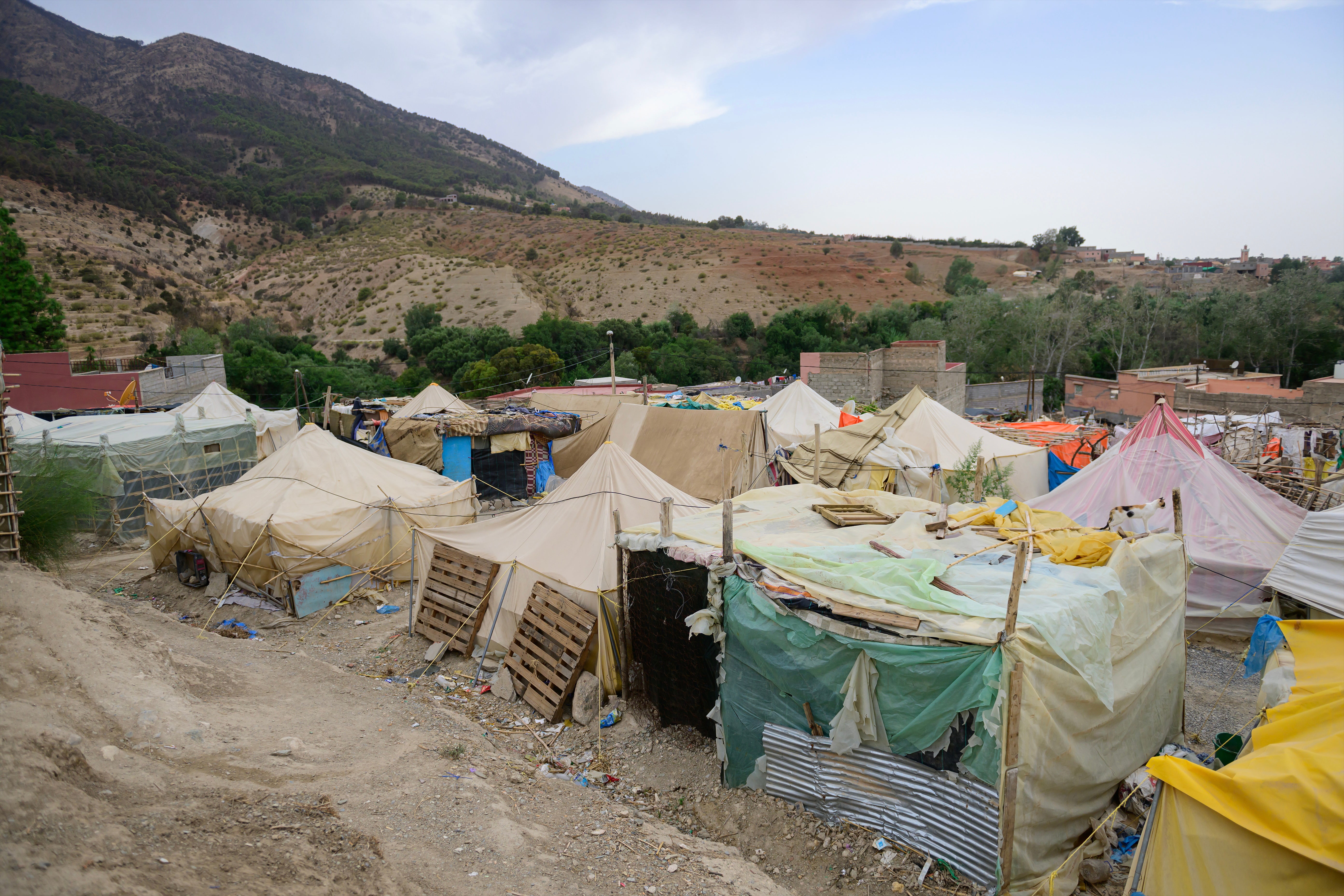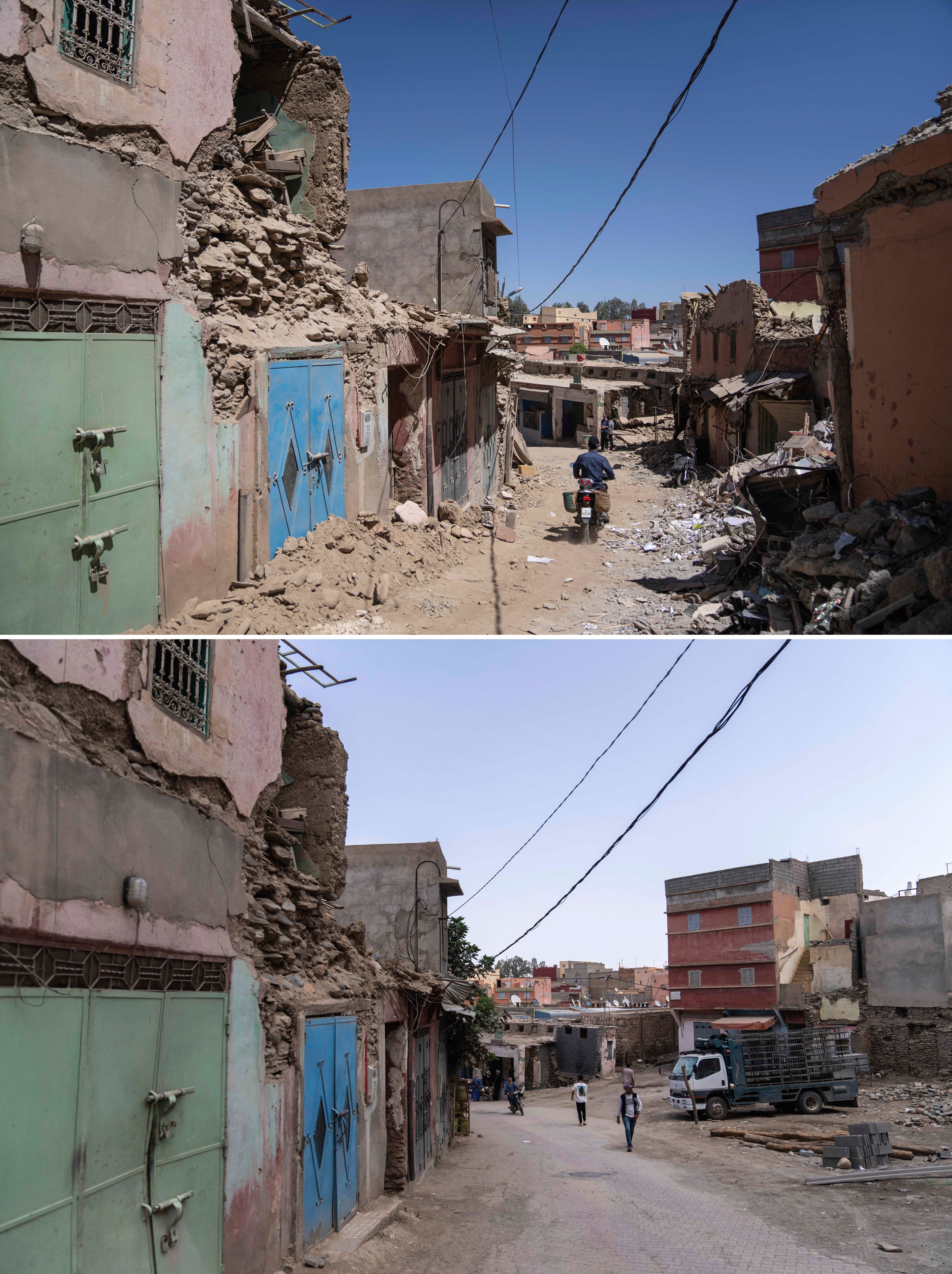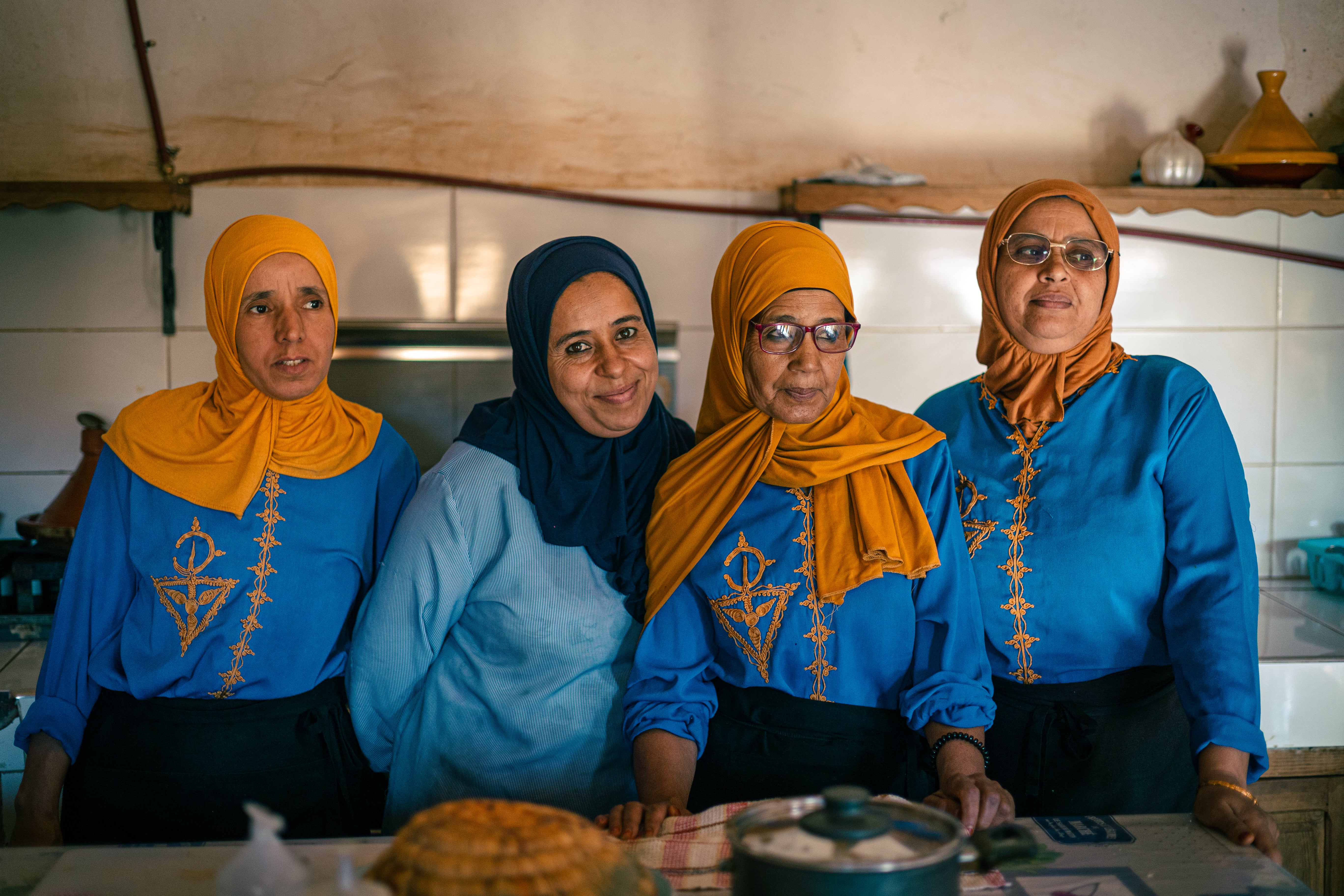This website uses cookies so that we can provide you with the best user experience possible. Cookie information is stored in your browser and performs functions such as recognising you when you return to our website and helping our team to understand which sections of the website you find most interesting and useful.
Your support helps us to tell the story
As your White House correspondent, I ask the tough questions and seek the answers that matter.
Your support enables me to be in the room, pressing for transparency and accountability. Without your contributions, we wouldn't have the resources to challenge those in power.
Your donation makes it possible for us to keep doing this important work, keeping you informed every step of the way to the November election

Andrew Feinberg
White House Correspondent
One year after a magnitude 6.8 earthquake took the lives of 3,000 people in Morocco and left thousands more homeless, destruction is still evident in communities throughout the High Atlas Mountains.
In remote agricultural villages where access is limited to uneven, poorly maintained mountain roads, flattened buildings have been swept into piles of rubble while local people await the promised government support to rebuild their homes.
The plastic tents that were widespread in the region in the immediate aftermath of the quake have become semi-permanent homes for many families. Others have moved back into cracked and damaged buildings or started reconstructing their homes using what resources they can find. Some have left the area altogether and moved to larger towns and cities.

More than 55,000 homes were destroyed by the earthquake that struck late at night on 8 September 2023, with the epicentre in al-Haouz province in the heart of the Atlas Mountains.
Tremors were felt across Morocco but it was in the High Atlas where the destruction was most devastating; many of the traditional clay buildings completely crumbled to the ground, leaving hundreds of thousands homeless and housed in tent camps.
Read more: Why the Ouirgane Valley should be your next short break
When Associated Press reporters revisited some of the most impoverished and hard-to-reach villages in the days before the anniversary of the earthquake last week, residents said they were still waiting for funds for reconstruction and the approval of blueprints.
In Imi N’tala, where the majority of buildings were destroyed and dozens of people lost their lives, the village looks much the same as it did in the immediate aftermath of the quake. The towns of Amizmiz and Moulay Brahim are swept of debris but mounds of rubble and bricks remain. Homes that weren’t completely destroyed are cracked and damaged.

Youssef Id Boullite, a mountain guide from Aroumd in the Atlas Mountains, told The Independent that his home village was mostly back to normal, with the plastic tents gone and business and schools functioning again, but for other communities, recovery was proving to be “a slow process”.
“Some families are still living in temporary shelters,” he added.
Gabriel Karlsson, the Red Cross country cluster manager for the Middle East and north Africa, said that the organisation is continuing to work alongside communities to help them recover and rebuild, but emphasised that the damage will take years to recover from.

Following the earthquake, Morocco’s government promised monthly stipends for residents of the homes destroyed, as well as additional funds for earthquake-resistant reconstruction. Last week, it declared that these had been provided to the majority of eligible families and households. “Specific solutions are being deployed on the ground for difficult cases,” Morocco’s Prime Minister’s Office said in a statement.
But residents told the Associated Press that dispersal of aid and support has been uneven in the months following the earthquake, with a disproportionate focus on cities and coastal areas, while rural and mountain villages are still waiting for funds and the approval of blueprints so that reconstruction can commence.
Last week, the commission tasked with reconstruction acknowledged the need to speed up some home rebuilding. However, officials have said that reconstruction will take about five years at the cost of 120 billion dirhams (£9.2bn).
With government aid lacking, Youssef, who has been working at Intrepid Travel as a tour leader for six years, noted that now it is more important than ever for travellers to continue to visit the region. He said: “My home village is the gateway to the highest peak in north Africa, Mount Toubkal. I grew up seeing people from all over the world visit for hiking. Tourism is a lifeline for my village and for every community in the Atlas Mountains.
“The other main industry in rural areas is agriculture but the last few years have been the driest in memory, meaning more people are reliant on tourism. It has ensured business is continuing for communities that need it and has helped families rebuild their lives.”
Intrepid, a travel company that specialises in small group tours, runs several trips in the Atlas Mountains, including a women’s expedition, a Mount Toubkal trek and a retreat in Ourigane – with all tours using local guides and visiting mountain villages.

Situated around 90km from Marrakech (roughly a two-hour drive), the High Atlas region has become increasingly popular among hikers and climbers drawn to the adventure of the rugged mountains and the challenge of scaling Mount Toubkal. Other tourists enjoy exploring the small villages, experiencing the renowned hospitality of the local Berber people, shopping at collectives that sell everything from rugs to argan oil, and relaxing at the small but beautifully designed hotels and lodges.
In the High Atlas, tourists won’t find chain hotels or restaurants and any tour providers will likely work closely with local communities. This means the money visitors spend will often go directly to people who live, farm, work and go to school in the region.
From Zina Bencheikh, Intrepid’s managing director for Europe, Middle East, and Africa, the message is the same: “Keep visiting the Atlas Mountains – and make sure you spend your tourist dollars in the village communities, as well as supporting local projects.”

Zina, who lives in Casablanca, added: “While life is returning to normal and tourism has recovered in Morocco, the importance of visiting and supporting local communities cannot be underestimated.
“Locals are eager for people to visit, their livelihoods depend on tourism and the increasing number of visitors is seen as a good thing for many. Travelling to Morocco and supporting locals means your tourism dollars are going back to communities that are still deeply impacted by the earthquake.”
Yousef also encourages tourists to support the region by donating to local associations like the High Atlas Foundation, the Amal Association and Education For All (EFA).
The latter, a charity that provides boarding houses and support for girls in the poorest and most remote areas of the Atlas Mountains to enable them to access education, was badly affected by the earthquake. Not only were five out of the six boarding houses destroyed but one student and three alumni lost their lives. Many other students lost family members and their homes.
Read more: What it’s like to climb Morocco’s mighty peaks
Managing director Samira Govers told The Independent that EFA has been working “in crisis mode” to support the girls as best as possible and help the association recover as quickly as reasonably possible.
She said: “We are reflecting on what has been one of the most difficult years in the EFA association’s history.
“The region went through a horrific year altogether and recovery in a geographically challenging area has not been as fast as we would have liked to have seen for the people living there.
The association embarked on a recovery programme that included using donor support to rent buildings so the girls could continue their education as soon as possible and renovating the least damaged house in the town of Ouirgane. It also set up an extra-curricular programme with additional tutoring during the summer holidays to both aid academic performance and provide mental and emotional support to girls who had suffered trauma.

Samira said: “We have now received confirmation that all schools in villages where we operate will open this school year. This means that we can start planning rebuilding in our original villages. We have decided to purchase a large plot of land in Asni [a town in the foothills of the Atlas mountains] where we can build three houses.”
Despite a difficult year, the association has experienced some remarkable successes that have left Samira and the group optimistic about the future of their students and the region.
She said: “We had 26 baccalaureate candidates sitting their final exams that miraculously all passed. This is an unprecedented 100 per cent, which is not only unique but also rather astonishing considering the disturbed academic year.
“They have clearly worked very hard and perhaps the measures we took with tutoring and extra support in the houses have paid off.”
You can support Education For All directly through The Intrepid Foundation by donating here



 Africana55 Radio
Africana55 Radio 
